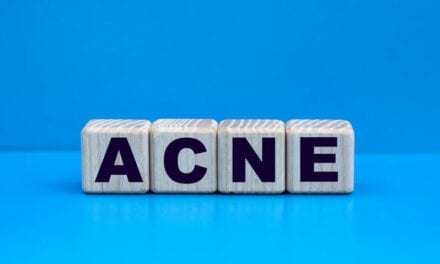Reports From the 26th Annual Meeting of the American Society for Laser Medicine and Surgery
Boston
April 5–9, 2006
PDT Offers a Noninvasive
Treatment for Thicker Skin Cancers

In the study, 20 biopsy-proven nodular basal-cell or squamous-cell carcinomas were anesthetized with 1% lidocaine with epinephrine, then were injected with 20% ALA solution until they blanched, covered with a topical layer of ALA, bandaged, and allowed to incubate for 1 hour. The lesions were then exposed to incoherent blue light or long-pulse PDL. The treatments to any clinically apparent lesions were repeated after 1 month.
The researchers found that the treatments were well tolerated by all the subjects. All 20 tumors completely or partially cleared in one or two treatments, and they have remained clear for more than 1 year.
Ambulatory PDT May Reduce Time Spent in Clinic
Photodynamic therapy (PDT) with 5-aminolevulinic acid (ALA) has been used to treat various superficial skin lesions. Currently, patients attend a clinic where ALA is applied, and after an appropriate delay—usually 4 to 6 hours—the lesion is exposed to light of the desired wavelength. Harry Moseley, PhD, of the University of St Andrews in Scotland discussed the results from a study that was conducted to examine the feasibility of ambulatory PDT using a portable light-emitting diode (LED) device that enables the patient to leave the clinic and apply the treatment to himself or herself at home.
Five patients with biopsy-proven Bowen’s disease were treated in the PDT clinic (for study purposes) with the portable LED device. ALA was applied, then doses of light were delivered to the lesion in two treatments with a 4-week interval.
The preliminary results demonstrated considerable promise for treating skin lesions with ambulatory PDT. At follow-up, the pain level after the first treatment was mild in three of the patients and moderate in two of the patients; after the second treatment, the pain was completely reduced in one patient and was mild in the other four.
Treat Atrophic Scars with Lasers
Zakia Rahman, MD, assistant chief of dermatology in the Dermatology Department of Stanford University School of Medicine, Stanford, Calif, presented the results of an investigation that used a 1,550-nm erbium-glass fiber laser to revise four types of atrophic scars: acne scars, surgical scars, traumatic scars, and striae.
Forty participants with Fitzpatrick skin types I to VI were enrolled in an Institutional Review Board-approved investigation. A total of 53 scars were identified and treated: 15 from acne, 13 from trauma, 13 from surgery, and 12 striae. As many as five treatment sessions were administered at treatment intervals of 14 to 35 days. All treatments were well tolerated. The investigators evaluated at 1, 3, and 6 months post-treatment for changes in texture, pigmentation, topography, and other appearance factors.
The evaluation indicated that 92% of the treated subjects sustained clinical improvement; two thirds achieved moderate to complete improvement of the scar’s overall appearance; and subjects in both high-energy- and low-energy-treatment groups showed evidence of textural improvement.
Removable Tattoo Pigments
R. Rox Anderson, MD, a professor in the Department of Dermatology at Harvard Medical School in Boston, discussed a study that focused on designing tattoo pigments made from safe, biocompatible materials that can be removed by lasers.
In the study, hairless rats were injected with India-ink and test-pigment tattoos. After 4 weeks, the tattoos were treated with an Nd:YAG laser.
Tattoo-intensity measurements showed a removal efficacy of 22% for India Ink and 52% for the test pigment 2 weeks after laser treatment, and 27% and 65%, respectively, 9 weeks after treatment. Many test tattoos were clinically undetectable and no adverse skin reactions were observed following tattoo application or removal.
Dual-Wavelength Lasers Treat a Wide Range of Conditions
Robert A. Weiss, MD, of the Maryland Laser Skin & Vein Institute in Hunt Valley; Anne Chapas, MD, of the Laser & Skin Surgery Center in New York City; and Emil A. Tanghetti, MD, of the Center for Dermatology and Laser Surgery, Sacramento, Calif, discussed treatments performed using dual-wavelength lasers.
Weiss’s presentation reflected on how shortening the pulse duration of an intense pulsed-light (IPL) laser with equivalent fluences enhances the treatment of different sizes of small, bright-red vascular lesions.
In twenty patients with small, bright-red hemangiomas, one side of the lesion was treated with 20-ms pulse durations and the other side was treated with10-ms durations. The end point was photothermal darkening in all cases.
The results showed that the small, red vascular lesions exhibited photothermal-darkening responses at 10-ms pulses, but only 10% of similar lesions responded to a 20-ms pulse, even at a higher fluence. In addition, pulse stacking did not improve the results at 20 ms, but was effective at 10 ms, with progressive photothermal changes. No purpura was noted.
Chapas discussed the efficacy of dual-wavelength treatment with a controlled delay and how this results in a greater depth of vascular coagulation and spares the epidermis at modest fluences. The study found that the greater depth of coagulation, using a combined 595- and 1064-nm laser, improves vascular outcomes.
In the study, 17 adults with untreated port-wine stains (PWS) were treated at two independent sites with a combined air-cooled 595- and 1064-nm laser. The subjects were treated with the 595-nm pulsed-dye laser (PDL) with a delay before delivery of the Nd:YAG (1064-nm) fluences. Both laser pulse durations were 10 ms.
The treatments were well tolerated by all subjects. The test spots treated with both PDL and Nd:YAG fluences cleared.
Tanghetti spoke about the treatment of vascular lesions using multiplexed wavelengths and its effectiveness in providing safe treatment of deep, superficial, or recalcitrant lesions.
Twenty-five patients with PWS or telangiectatic vessels were treated with pulsed-dye and Nd:YAG lasers. Time delays between wavelengths were 50 ms to 2 seconds, based on the type of lesion.
The results indicated that using multiplexed wavelengths provided a greater depth of treatment and significantly improved the recalcitrant vessels. Treatment fluences were lower than for effective treatments with either device alone. According to the study, time delays of at least 500 ms are required for safe and effective treatment of deeper, low-flow lesions.



